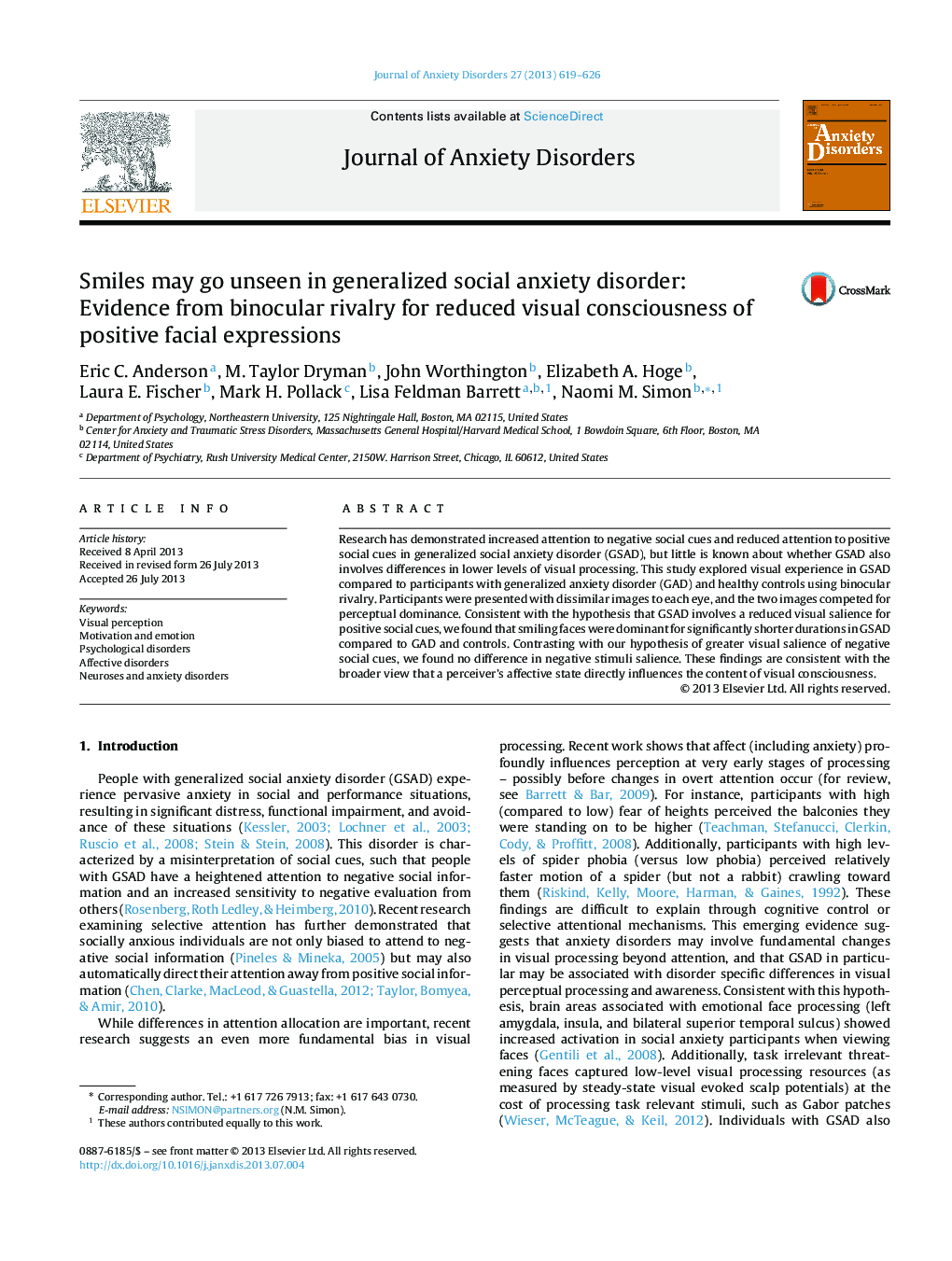| Article ID | Journal | Published Year | Pages | File Type |
|---|---|---|---|---|
| 909386 | Journal of Anxiety Disorders | 2013 | 8 Pages |
•Explored visual processing in generalized social anxiety disorder (GSAD).•Smiling faces were visually perceived for shorter durations by GSAD participants.•Findings support hypo-positivity hypothesis in GSAD.•Suggests affective state of an individual influences conscious visual experience.
Research has demonstrated increased attention to negative social cues and reduced attention to positive social cues in generalized social anxiety disorder (GSAD), but little is known about whether GSAD also involves differences in lower levels of visual processing. This study explored visual experience in GSAD compared to participants with generalized anxiety disorder (GAD) and healthy controls using binocular rivalry. Participants were presented with dissimilar images to each eye, and the two images competed for perceptual dominance. Consistent with the hypothesis that GSAD involves a reduced visual salience for positive social cues, we found that smiling faces were dominant for significantly shorter durations in GSAD compared to GAD and controls. Contrasting with our hypothesis of greater visual salience of negative social cues, we found no difference in negative stimuli salience. These findings are consistent with the broader view that a perceiver's affective state directly influences the content of visual consciousness.
